- Trek Fuel Ex 5 Review and Buying Guide - September 12, 2022
- Best Trek Mountain Bikes - September 12, 2022
- Best Marin Mountain Bikes: Which Model is Right for You? - September 12, 2022
From winding trails to horseback riding paths, and, of course, gravel– gravel bikes promise a lot, all with a pleasing design. But is a gravel bike the only bike you’ll ever need, or just a gimmick? Hype aside, knowing how to find the best gravel bike is challenging– and also important.
Gravel bikes are popular, with a wide appeal from function to design. One of the biggest attention-grabbers is the debut of the Festka Scout Bike. In a First Look feature, the Festka Scout wowed with a stunning, unique exterior.
Festka is a Czech bike manufacturer known for its carbon bikes and innovative designs. For the Scout Grabel, the manufacturer teamed up with Ondřej Konupčík and Radim Kašpárek, talented tattoo artists.
To achieve the unique splashes of blue and purple, acrylic paint was applied with an eye towards “organic shapes”– much in the same way the two artists conceptualize tattoos. Finished with a matte, transparent coat, there’s no denying the bike’s appearance is unique.
What’s odd about the press release, though, is that so much of the focus is on the gravel bike’s appearance but little about its performance as a gravel bike. Many may come across press releases– or general hype– about gravel bikes and wonder: is a gravel bike worth it?
In this guide, I’ll help you go beyond initial impressions and tell you the pros and cons of gravel bikes. I’ll tell you the main differences between gravel, road bikes, and mountain bikes. And, of course, I’ll tell you how to find the best gravel bike for your money.
Table of Contents
What is a Gravel Bike?
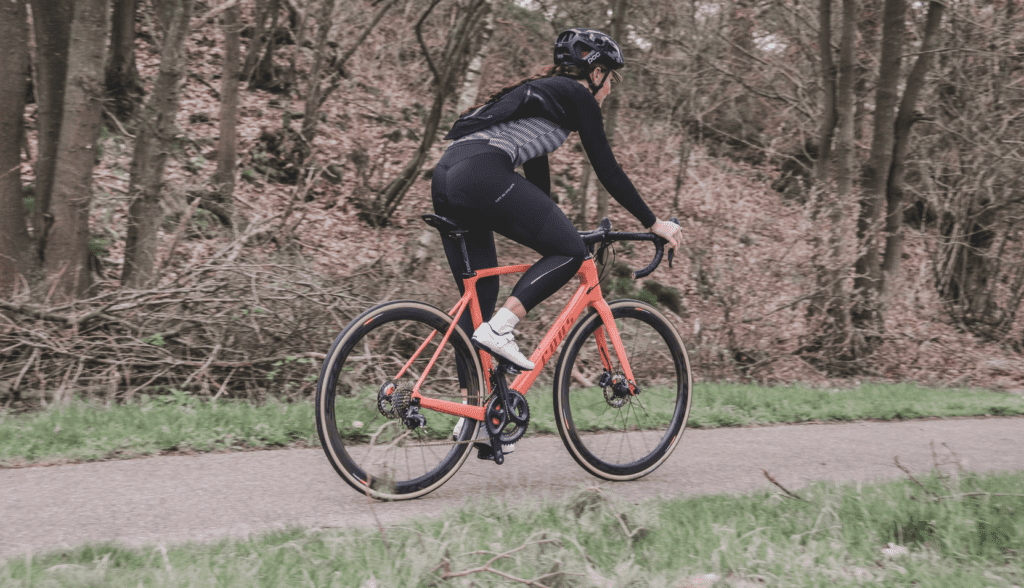
A gravel bike features a flared, or drop handlebar with a slim frame, not unlike a road bike, but generous tires. Touted as versatile and able to handle terrain types, gravel bikes are popular because many see them as bikes for all purposes. They’re often taken for trail riding but even camping. Lightweight than mountain bikes yet sturdier than a road bike, some see a bike as a nice balance between the two.
Why is gravel riding so popular?
Of course, gravel bikes are popular also because they allow you to ride over gravel- something most bikes will not be able to tackle. Gravel riding is popular because it’s different and usually quiet. Gravel roads aren’t typically heavily traveled. Gravel riding may allow you to explore places you otherwise wouldn’t. Some even purposefully travel around the country to the 10 best gravel biking destinations in the United States.
The other appeal of gravel riding is a sense of challenge. You’re traveling on new trails and learning the ins and outs of riding in a new way. Gravel riding offers a different, quieter sense of adventure while also allowing you to pursue other terrain types.
Are gravel bikes still popular?
Gravel bikes remain popular, and they aren’t just a fad or gimmick. While they aren’t perfect or suited for every rider, they truly do offer versatile riding and allow cyclists to explore gravel trails and more. Popularity aside, it’s worth considering buying a gravel bike– if the riding experience and what they are used suit your needs.
What is gravel biking like?
Gravel biking in many ways combines the road and mountain biking experience. You have maneuverability but also control. You’re conquering bumpy roads and terrains your road bike wouldn’t touch– and you’re experiencing paths you’d normally need to skip. At the same time, you need to be aware of how a gravel bike feels and how to ride one properly.
Is a gravel bike comfortable?
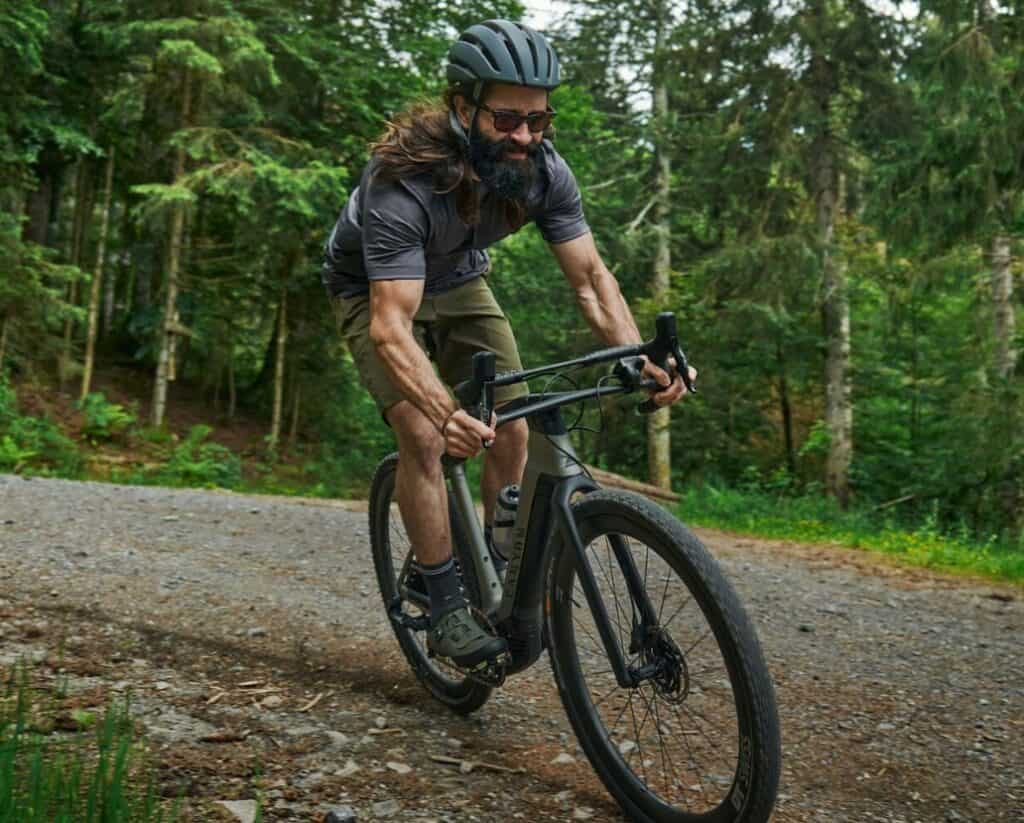
Gravel bikes tend to be fairly comfortable as their upward orientation allows you to sit comfortably even for long distances. The right size, quality frame, cushioned seat, and comfortable handles, however, play a big role in the comfort of your ride.
How do you sit on a gravel bike?
Body position is important for both your comfort and control. First, you need as neutral of a position as possible. This means adjusting your position so that your hips and elbows are mostly in alignment. With a drop handlebar, your arms and hands will lean a bit wider, but it should be a comfortable fit– you shouldn’t feel as if you’re stretching. If you are, chances are you don’t have the correct fit. The cockpit, which includes the handlebars, saddle, and pedals, should lean higher than an average bike for a more upright orientation.
How do you start gravel riding?
Even if you have a great gravel bike, I recommend starting slowly. If you plan to ride on gravel trails, try to find one you’re familiar with and take it slowly– better yet, if you travel without a fellow cyclist. Gravel riding is fun but takes time to adjust to. Even though gravel bikes are designed for gravel riding, you still need to get a feel for speed, control, and technique.
How fast should you ride on gravel?
Start slower than you think you need to. Even with a great gravel bike, it takes a while to adjust to the difference– and that’s especially true if you’re going from road cycling to gravel. Adjust your speed as you get a good sense of control, and take any turns slowly. There isn’t a specific ideal speed, but the key is patience when you’re first getting into gravel riding.
What is a gravel bike used for?
Now I want to discuss what a gravel bike is useful for. While touted as a versatile bike– is a bike worth it, and the only bike you’ll ever need? Here’s what these bikes are used for, as well as its limitations.
Can you jump a gravel bike?
You could argue that any bike, no matter the type, can be used for jumps. But there’s a reason why dirt bikes are favored for jumping. Dirt bikes offer substantial control– and provide enough inertia– to make those jumps. They simply aren’t suited for jumping. They don’t provide the desired control for smooth landings, nor can you easily perform anything aside from a small, single jump.
Can gravel bikes go on trails?

One thing that gravel bikes can do is ride on gravel and dirt trails. However, there’s a caveat to this. Gravel bikes aren’t equipped for steep trails, whether that’s uphill or downhill. You need a more substantial bike– a true mountain bike– for those. Gravel bikes are best suited for relatively level and beginner’s trails.
Can you ride a gravel bike on sand?
Live near a beach or want to travel by gravel bike? They can indeed be ridden on the sand, which is another part of their popular appeal. The only caveat is that they are more suited to dry, not wet sand. As a general rule, gravel bikes perform best in dry conditions– which also means they’re not as equipped as mountain bikes for rainy and snowy conditions.
Are gravel bikes good for commuting?
Gravel bikes are suitable for commuting. Not only do they provide more versatility than a road bike, but they also are a bit more comfortable due to their upright orientation. They’re suited for long and shorter commutes while not being as bulky as a mountain bike.
Can you ride a century on a gravel bike?
A century ride is a distance of either 100 miles or 100 km, depending on the units that your country uses– even though, of course, these distances are quite different. It’s simply a milestone of a very long-distance ride, with the average cyclist finishing within 8 hours– but that can vary quite a bit. Thus, when you’re looking for a century bike, you’re looking for one suitable for long distances.
Touring bikes and hybrid bikes are considered to be the best for these rides, such as the Genesis Tour de Fer 30 touring bike. You want to look for a speedier, springy ride with adjustable hydraulic brakes. While it can be used for longer distances, they’re not optimal for a century ride.
What is the difference between a road bike and a gravel bike?

If you’re in between a road bike vs a gravel bike, it’s important to understand the main differences and similarities. The main difference is that a road map should only be used on paved roads, while a gravel bike is used for gravel, sand, and dirt trails. A road bike is slightly lighter, faster, and has a less upright position. A gravel bike, with its more upright orientation, is a bit more comfortable than a road bike.
How much slower are gravel bikes?
How much slower a gravel bike is vs a road bike depends on many factors, but they simply don’t have as much potential for high speeds. They don’t generally exceed 25 mph. Gravel bikes aren’t slow, but they also aren’t primarily designed for speed.
Is a gravel bike good for the road?
The good news is that a gravel bike can be used for the road. Not only is it equipped for road biking and commuting, but it’s more comfortable and provides nice control as you ride. You may not be able to get from point A to B at top speed, but gravel bikes can certainly be ridden on roads.
Is a gravel bike safer than a road bike?
Gravel bikes are safer than road bikes– especially for trail riding but also for general road riders. Compared with a road bike, a gravel bike has more generous tires and tighter control. Because it’s designed to be able to ride over uneven terrain, control is prioritized over speed.
Is gravel riding harder than the road?
There’s little doubt that gravel riding requires specialized technique and control vs road riding. Gravel riding is simply a different experience and it may take some time to get used to.
Can you convert a road bike to gravel?
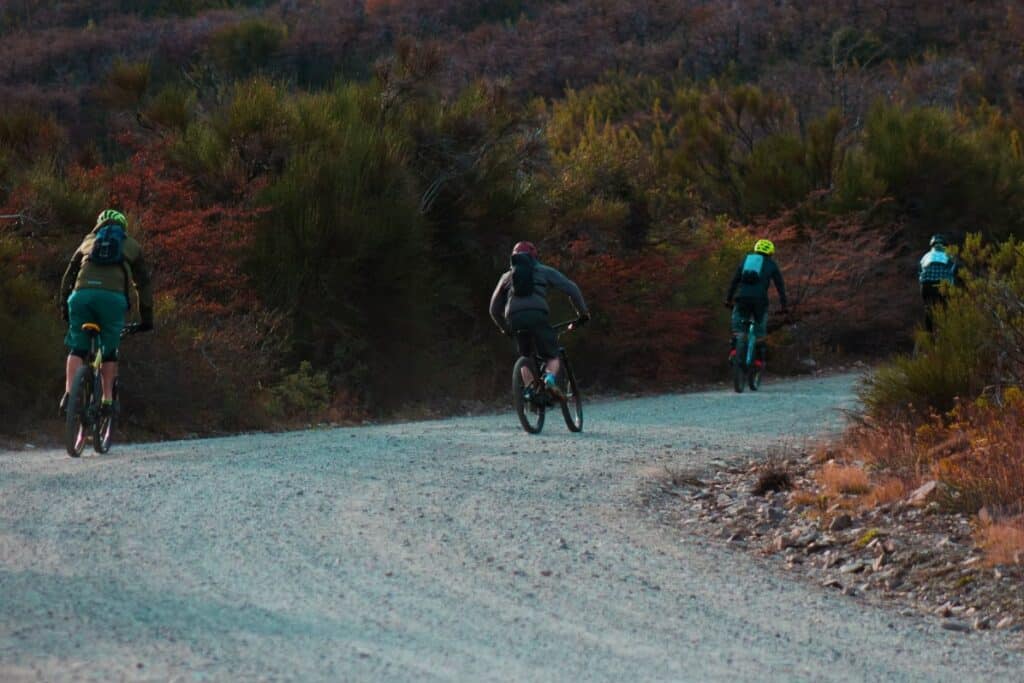
Some claim that you can convert a road bike to a gravel bike. This is done by switching out pedals, equipping your bike with wider gravel tires, and swapping out with wider handlebars. The problem is that these modifications are not always possible, can be costly, and are limiting. Even with all of these modifications, your road bike still may not be a true gravel bike, nor can you alter the orientation of your gravel bike. Thus, it’s best to decide upon purchase if you want a road or gravel bike– accepting that you can’t fully convert a road bike to a gravel bike.
Can a gravel bike replace a mountain bike (or a cyclocross)?
Bulkier than a road bike but less substantial than a mountain bike, many wonder if you can use a gravel bike like a mountain bike. The answer: it depends. Yes, you can take a gravel bike on some trails. But it’s not a replacement for an enduro bike and certainly not a replacement for a dirt bike or downhill bike. A gravel bike is much more susceptible to moisture and slick conditions. It also doesn’t provide as much control or inertia to power up hills or go downhill. Nor, as I mentioned, is a gravel bike intended for jumps or mucky conditions.
Is a gravel bike faster than a mountain bike?
A gravel bike will be faster than your average mountain bike on roads, just as it’s slower than your average road bike. If you’re looking for versatility and a commuting bike, a gravel bike is a better choice than a mountain bike. If you plan on using it for steep trails and mucky conditions or jumps, then the mountain bike is the superior choice.
What is the difference between a CX and a gravel bike?
CX refers to a cyclocross bike, which is designed for racing, including for grass and moderate trails. The main difference between a CX vs a general gravel bike is immediately apparent in their orientation. A gravel bike is more upright, whereas a cyclocross bike lies lower. The chainstays are longer in a gravel bike, making it more comfortable but also less maneuverable. As a cyclocross is designed for racing, it has more gears and greater speed potential. Likewise, gravel bikes have wider wheel sizes, while a cyclocross bike usually uses the standard 700c size seen on road bikes.
How do I find the best gravel bike? (My Buying Criteria)
If you’ve decided that a gravel bike is the right type of bike for you, don’t just go out and buy the first one you see. Here are my buying criteria for selecting the best gravel bikes and some general buying tips, no matter what your needs are.
What are gravel bikes made of?
You can find gravel bikes in aluminum, carbon, and steel. Sometimes you can find titanium frames. That said, aluminum frames are less common and for a reason. Carbon and steel are better options for their durability and hardness. An aluminum frame is too easily damaged and dented by gravel. For this reason, I recommend against aluminum, even though it’s lightweight and most affordable. See the chart below for a comparison of carbon vs steel vs titanium for a gravel bike.
| Main Material | Pros | Cons |
| Carbon |
|
|
| Steel |
|
|
| Titanium |
|
|
If you have the money and can find a model that fits your other needs, titanium will be the best option for a gravel bike. Steel is a hardy option, but you need to avoid taking it out in wet conditions too much. Carbon is going to be less comfortable and more easily damaged, but it can do the trick if you plan on using your gravel bike more heavily for road and commuting vs trail riding.
Why do gravel bikes have no suspension?

For a mountain bike, you usually need to pay attention to the suspension. You may be surprised to learn that gravel bikes don’t have suspension– another thing that distinguishes them from mountain bikes. This is not a negative thing, as it makes sense for the functionality of a gravel bike. Suspension adds weight and bulk.
Gravel bikes are meant to be used on both gravel trails and the road. The lack of suspension makes them versatile– though not hardy enough for uphill climbs and handling steep downhills. While you can add suspension to a gravel bike, you’d be limited to a few types, and the downsides outweigh the positives. You can’t convert a gravel bike to a mountain bike, and adding suspension will reduce its versatility.
How much does a gravel bike cost?
Some claim a gravel bike is expensive– and it’s true that it’s expensive compared to a general road bike. But gravel bikes are usually more affordable than mountain bikes of comparable quality. You can expect to pay a starting price of a few thousand dollars on average. Of course, price is greatly dependent on materials, make, and availability.
Are gravel bikes smaller than road bikes?
Gravel bikes are longer than your average road bike, which allows the wheels to extend further. However, for your perfect fit, you’re going to need to size down for tighter control. It’s best to a size close to a normal bike– and where you can comfortably fit– while understanding your fit should be ever so slightly snugger than on a road bike in part due to that additional length. Always refer to the manufacturer’s guidelines for specific sizing. As far as weight, most gravel bikes have a maximum weight of around 290 lbs, and some less than that.
What size are gravel bike tires?
Tire size varies from 25mm to 28mm to 38mm. 38s are optimal if you plan on taking your bike on a lot of gravel and sand, while 25mm will provide the most lightweight, speedy ride. I recommend a 28mm most for a balance, but you should select the bike tire that suits how you plan to use your gravel bike.
What is the best gear ratio for a gravel bike?

Something gravel bikes do have is gears. A 2:1 gear ratio is ideal for a gravel bike, though a 1:1 ratio low gear may work if you plan to use it for commuting. As far as the drivetrain, great options include the Shimano 105 for a blend of endurance and light trail riding or something like the Shimano GRX RX600 for heavier gravel riding. You want to look for easy-to-use shifters, low gear accessibility, and a tension clutch if possible.
Why do gravel bikes have mechanical brakes?
Gravel bikes can have disc brakes, mechanical brakes, or hydraulic brakes. Mechanical brakes work with a steel cable and physically force the bike to come to a stop. Hydraulic brakes, meanwhile, provide more efficient and even braking.
While hydraulic brakes are ideal for smooth stops, many gravel bikes are made with disc brakes. They perform fairly well for gifted riders for a gravel bike and are certainly less expensive, even if not ideal.
Do all gravel bikes have drop handlebars?
While most gravel bikes have drop handlebars, some newer models have flat handlebars, which are closer to a mountain bike. Flat handlebars are a bit more comfortable, provide a bit more control, and provide both greater visibility and quick access to your brakes.
On the other hand, drop bars are more efficient for speed and distance and better for commuting. If you plan on an even split on trail and road, drop handlebars make sense. If you’re mostly taking your bike on gravel and dirt, you may want to consider a more flat handlebar orientation. But even flat handlebars on gravel bikes will have a flare of about 10 degrees.
How wide should my gravel bars be?
As far as handlebar width, it’s not the most important factor, but the wider your bars, the more strain on your shoulders and the more it’ll ride like a mountain bike, requiring upper body strength. I wouldn’t go as wide as 60 cm. Keep it under that, from 50 to 55cm, and you’ll be in a better range for control. Of course, your body size plays a role too. Riders with longer arms won’t have longer handlebars.
How can I make my gravel bike more comfortable?
The comfort of your gravel bike comes down to a great make and appropriate size. But I also recommend paying attention to the saddle. Carbon fiber is pricey but is considered the most comfortable for long and bumpy rides. Microfiber and foam are also great options.
Look for padding where it matters most: near your tailbone. Wider seats and usually most comfortable, and, like handles, some saddles are designed to be ergonomic. Some are also designed in a way that reduces pressure and tension.
Gravel Bikes: My Picks
Based upon my criteria, here are a few of my top recommendations for gravel bikes. I’ve considered the materials of the bike body, the saddle, the handlebars, gears, breaks, and overall features and quality.
All of these bikes are manufactured by reputable companies. While none of these gravel bikes are perfect, hopefully, you’ll find a fit for yourself.
GR300 Bike
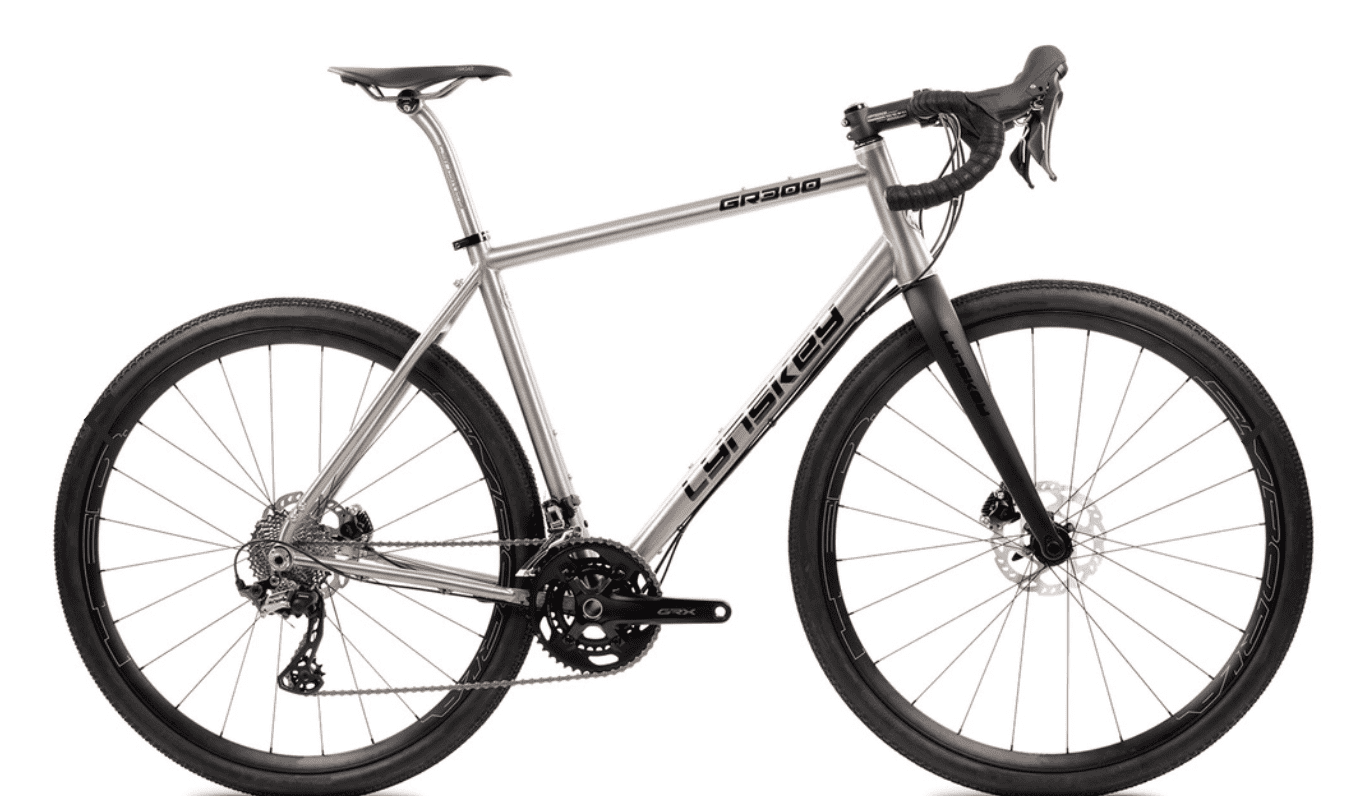
This sleek titanium gravel bike takes you from commuting to gravel and trails. It offers a smooth, comfortable ride with geometry designed for loose terrain.
Responsive and easy to learn, this bike was awarded the best bike for gravel in Outdoor Magazine. There are also options to customize your stem, seat post, wheelset, and even finish.
Pros
- Premium Titanium Frame
- Award-Winning
- Excellent Geometry
- Customized Order
Cons
- Disc Brakes
- Expensive
Where to Buy
You can buy the GR300 Bike Here.
Co-op Cycles ADV 1.1 Bike
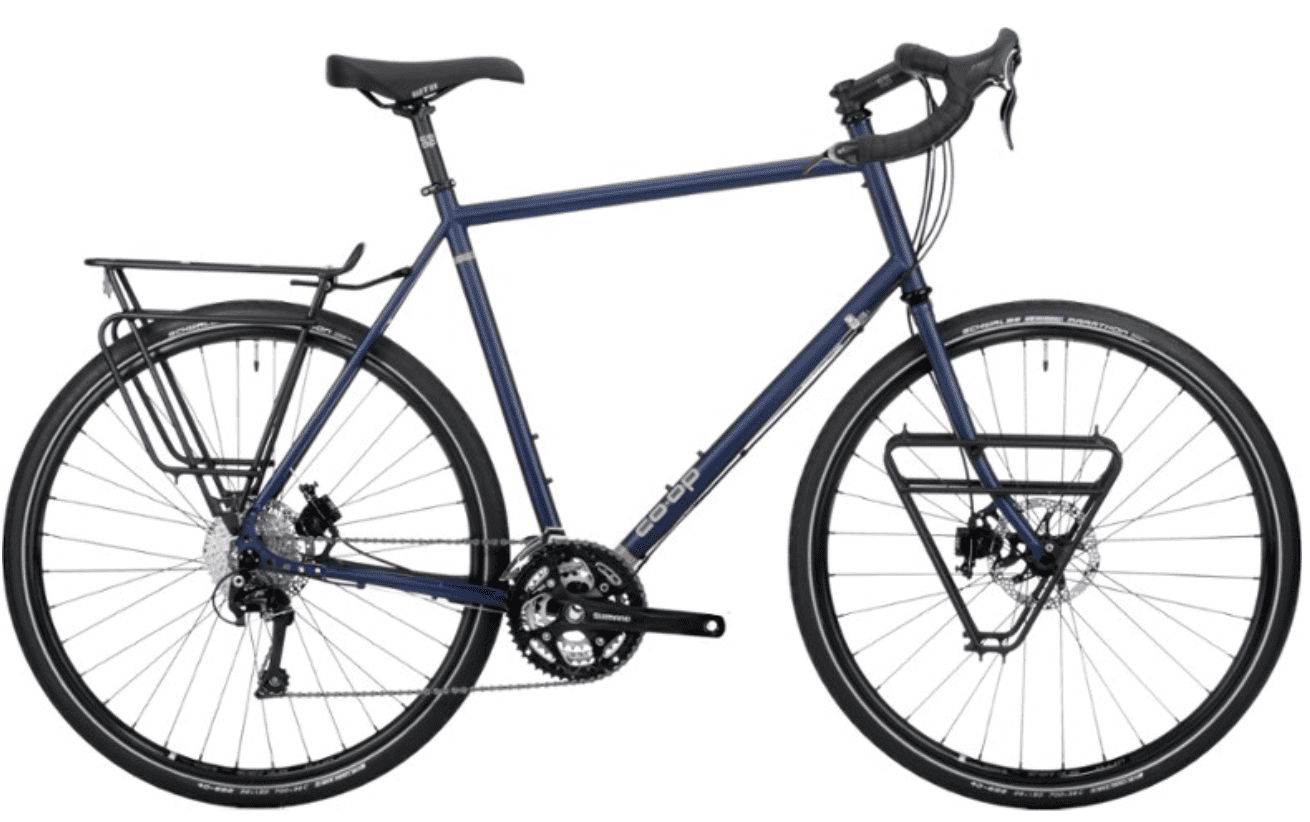
This gravel bike is about half the price of my previous pick, and it’s still an excellent option. Featuring a durable steel frame, it has a generous wheelbase for stability, plus a nice range of gears for the price point.
The tires have been tested for excellent performance and durability, and the saddle is designed for comfort.
Pros
- Hardy Steel Frame
- Great Gear Range
- Comfortable Saddle
- Durable Tires
Cons
- Steel Can Rust
- Bike is Heavy
- Right Now, Sizes Are Limited
Where to Buy
You can buy the Co-op Cycles AVD 1.1 Bike Here.
Litespeed Titanium Ultimate Gravel Bike
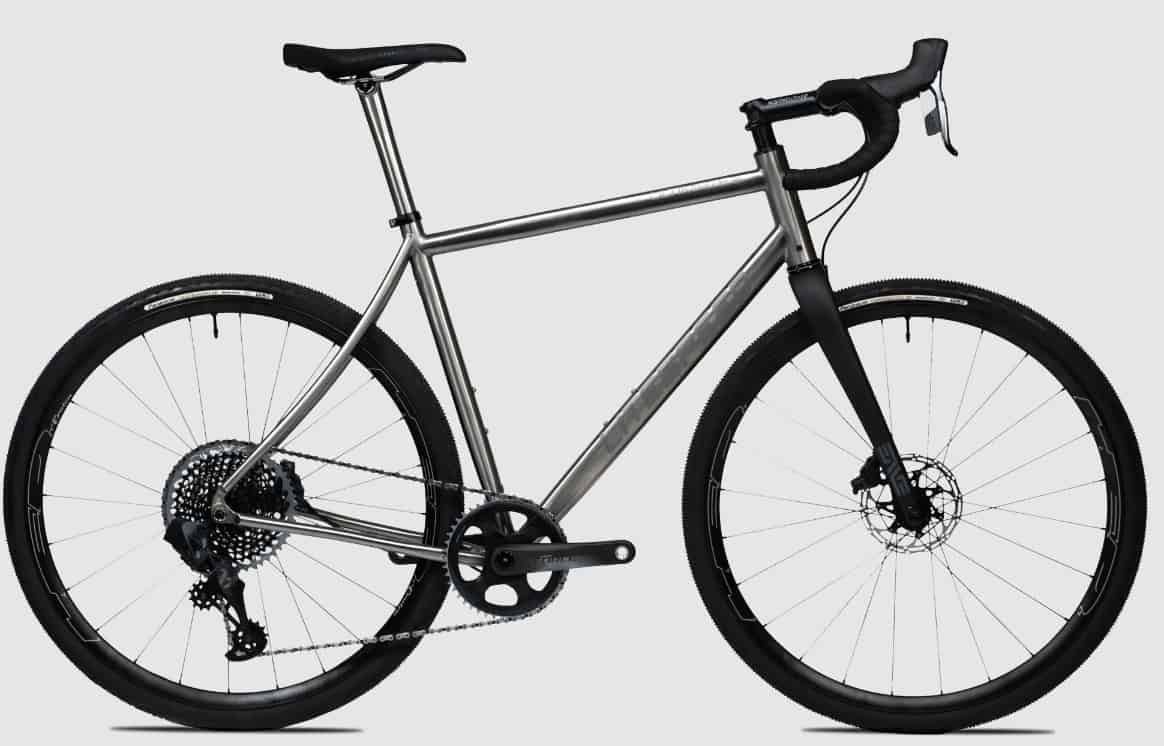
At once lightweight, aerodynamic, and stiff enough for stability, this gravel bike is sure to take you the distance. It offers excellent versatility from road to trails with a stiff drivetrain for more climb than most gravel bikes.
It also features shock absorption for a cleaner, more comfortable ride.
Pros
- Aerodynamic Titanium Frame
- Versatile
- Shock Absorption
- Wide Size Range
Cons
- Disc Brakes
- A Little Expensive
Where to Buy
You can buy the Litespeed Titanium Ultimate Gravel Bike Here.
Wilier Jena Rival Gravel Bike
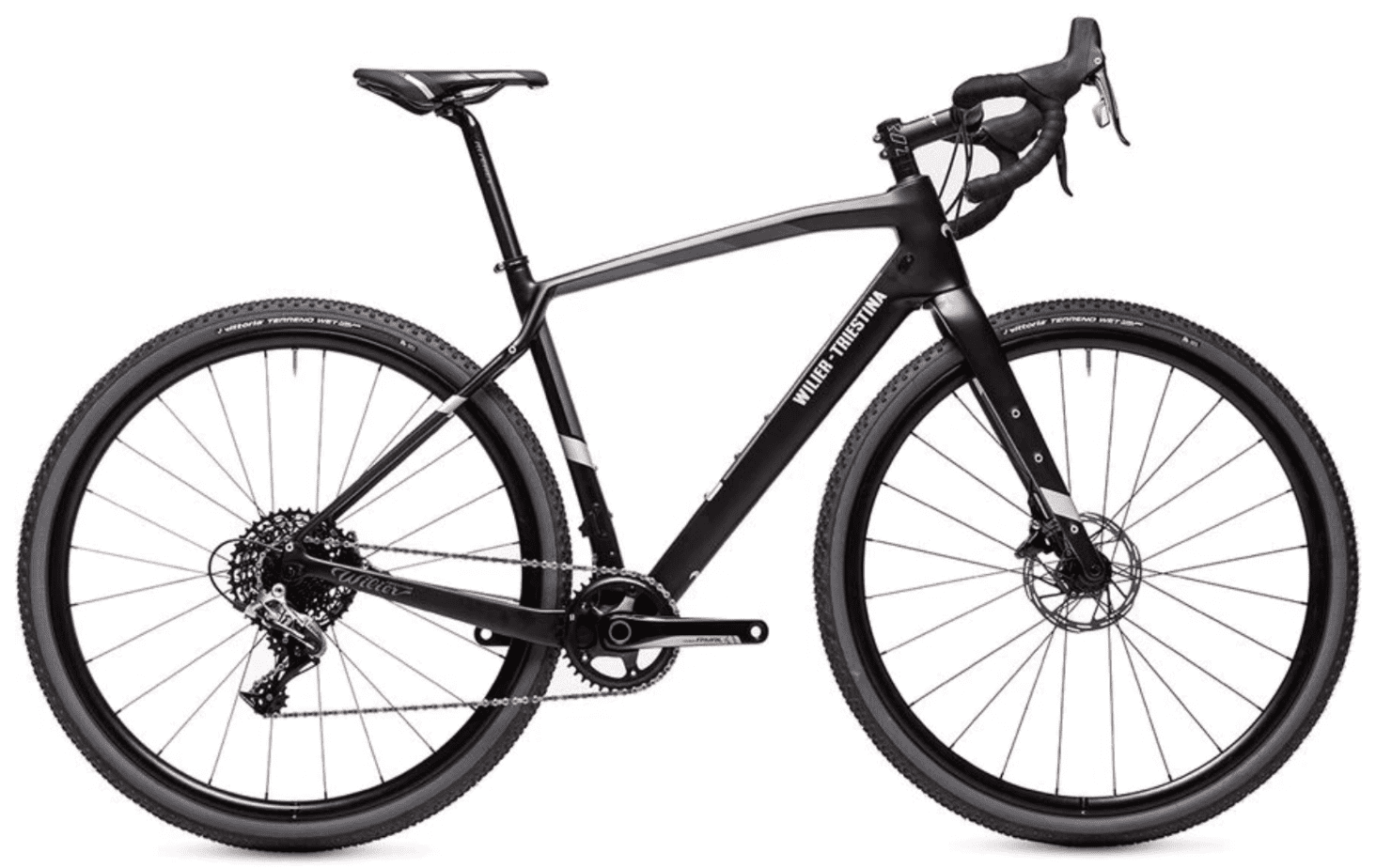
If you have a heftier budget and are looking for a comfortable ride, the Wilier Jena Rival Gravel Bike may be worth taking a look at. Designed to optimize gravel biking, the frame features lightweight and strong carbon fiber, complete with an efficient drivetrain.
It’s springy and responsive to movement, with a comfortable saddle. This bike could become a favorite for commuting as well.
Pros
- Springy and Lightweight
- Efficient Drivetrain
- Lightweight Carbon Frame
- Comfortable
Cons
- Expensive
- Limited Size Options
Where to Buy
You can buy the Wilier Jena Rival Gravel Bike Here.
Frequently Asked Questions
Answer: Gravel is damaging to most tires not suited for it. Aside from specialty gravel tires, gravel can puncture or quickly wear away tires. The reason is that gravel creates excessive friction on your tire’s tread. But even more concerning is that improper tires mean you won’t have proper traction, leading to potential safety concerns. That’s why it’s so important to ride on gravel only with tires equipped to handle such terrain.
Answer: Most gravel bike handlebars have a slight flare to them. The reason for the flare is for balance or comfort and control. With a flared design, you still have steering control but you have more room for your arms so you don’t feel cramped. Some also add attachments, such as a Bar Bag.
Answer: Technically, a gravel bike can be used for a variety of purposes. The idea is that gravel bikes can handle different terrain types and are more substantial than road bikes. However, the argument that you can upgrade a gravel bike to a mountain bike has many flaws. It can’t replace a true mountain bike.
Answer: Cyclocross bikes are quite similar to road racing bikes in terms of a slimmer frame meant for navigation. While cyclocross is designed for acceleration and maneuvering, they are still heavier than road bikes.
The slightly bulk and knobby characteristics of their tires are designed for muddy trails. Meant for racing, they’re not as substantial and have a little less control than your average mountain bike.
Answer: That’s a question open to some disagreement. Cyclocross bikes are suitable for different terrain types, but they don’t have the same grip and control or climb as mountain bikes. I’d use a cyclocross for fairly even to moderate trails, but not for downhill or uphill biking primarily.
Final Thoughts
Gravel bikes are not a replacement for mountain bikes, but they are more versatile than road bikes. If you love using your bike to commute and exercise but also like to hit some light trails and gravel roads, it’s worth looking into.
They are a bit expensive, though not as expensive as high-end mountain bikes. With some savvy shopping, you can find a model that fits you.
Final Buying Recommendations
Finding a great gravel bike is the first step, but you’ll also need a great gravel bike helmet. While you can get by with a general biking helmet, a specialized gravel bike helmet will offer you the most protection and support for loose terrain.
I recommend the 100percent Altis Gravel Helmet. You can also opt for an all-road helmet, like Met Allroad Helmet.
Continue reading:

